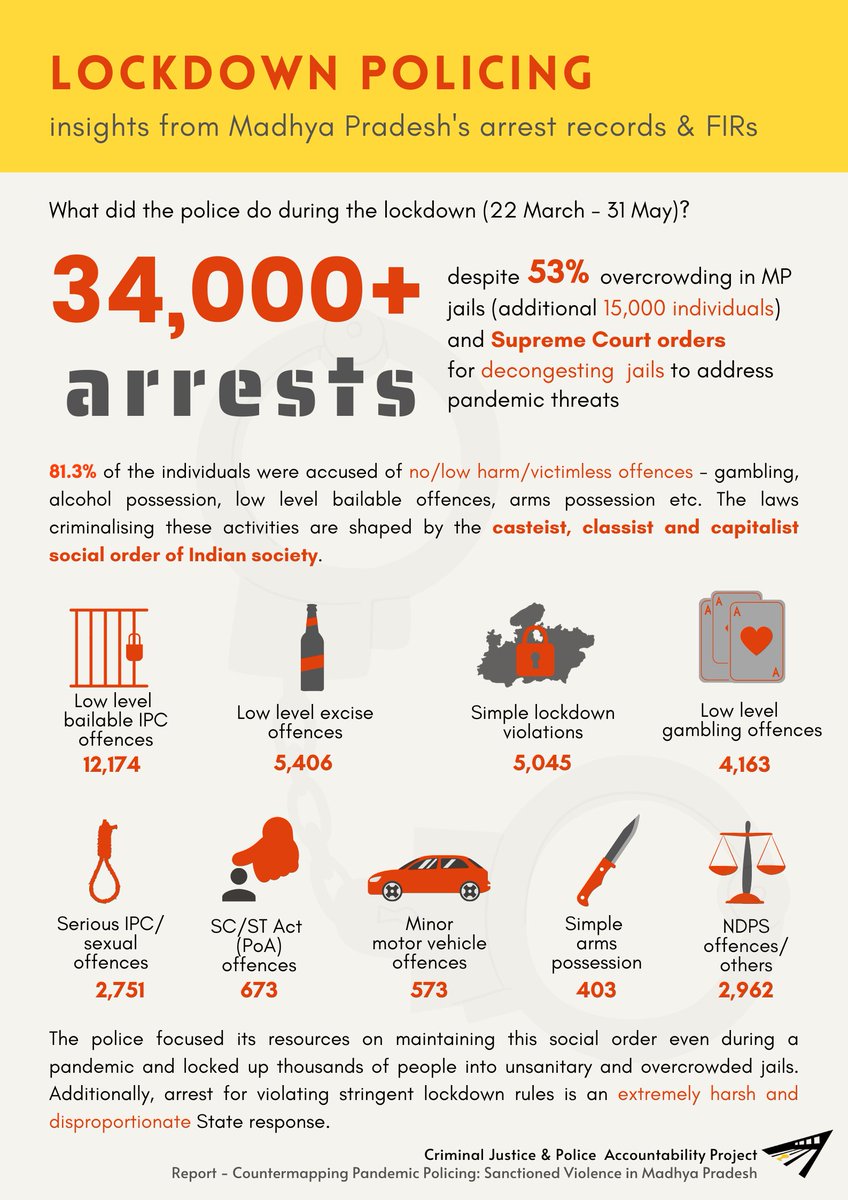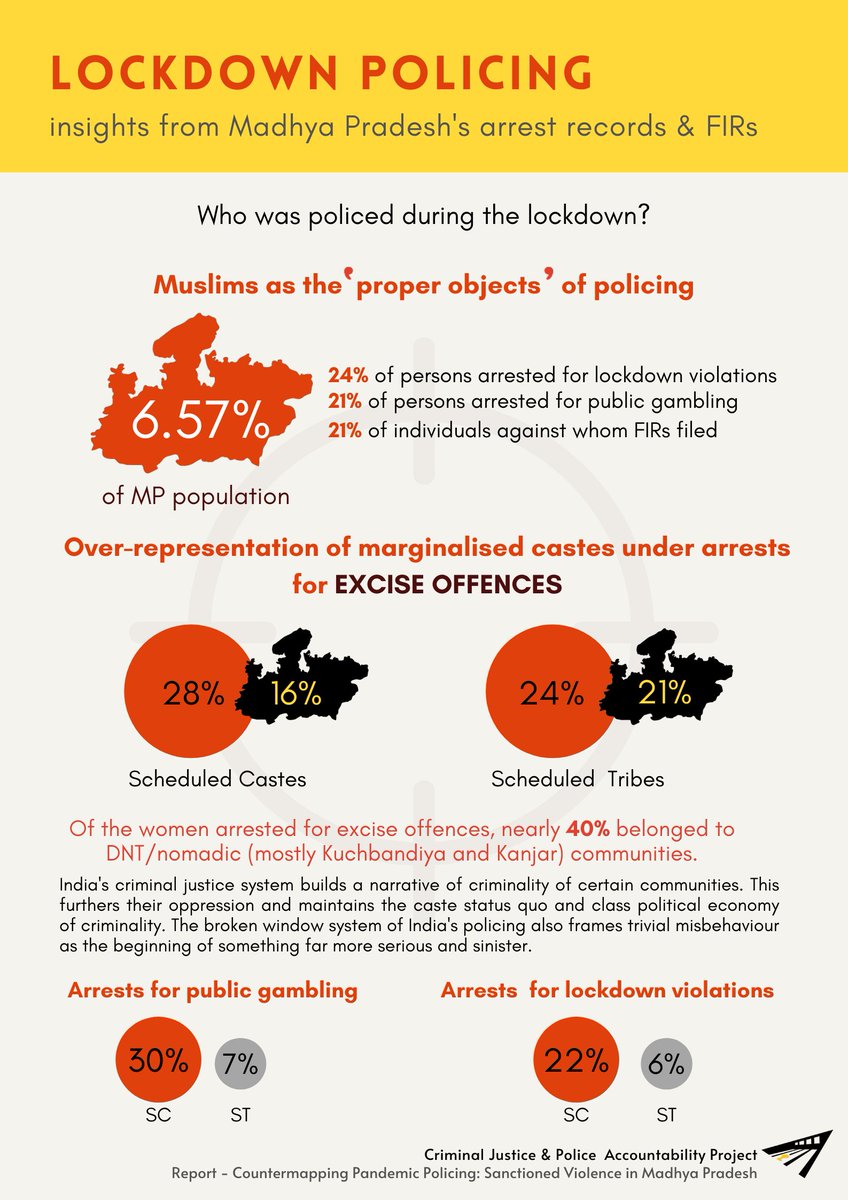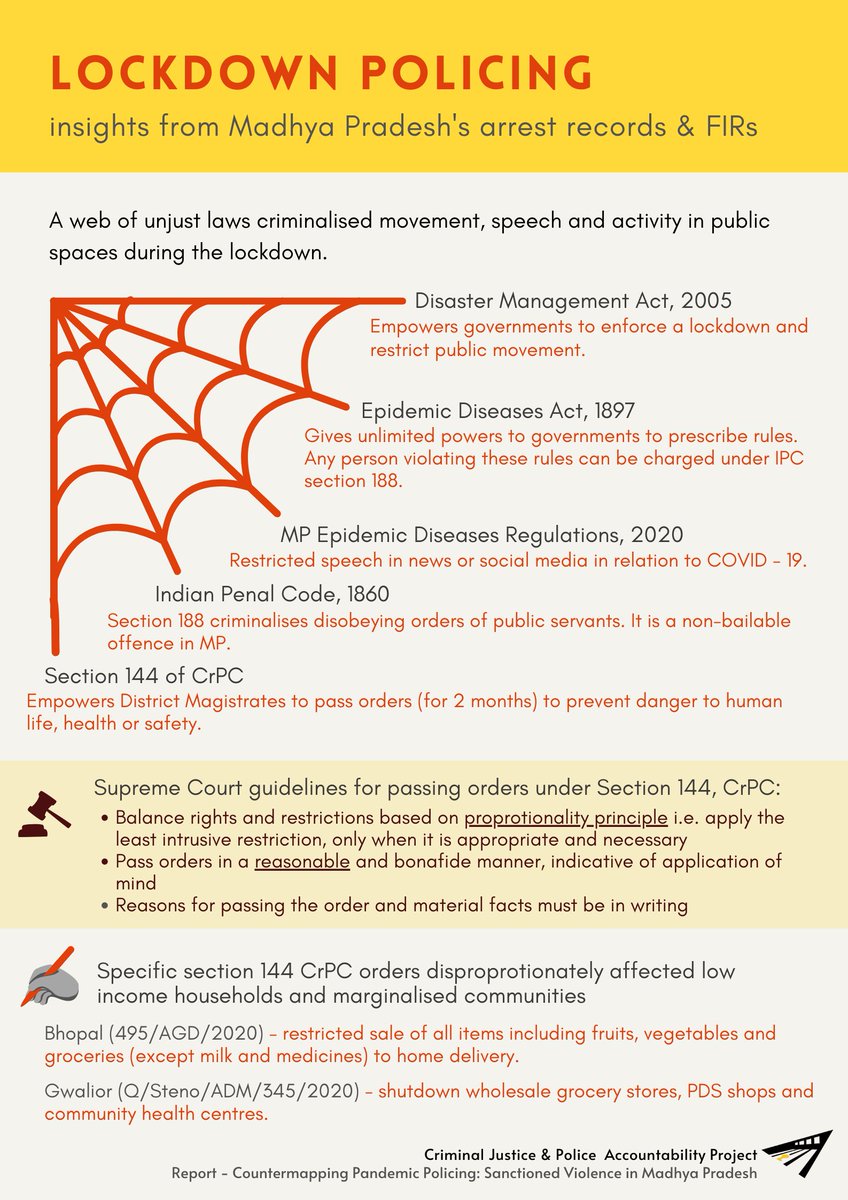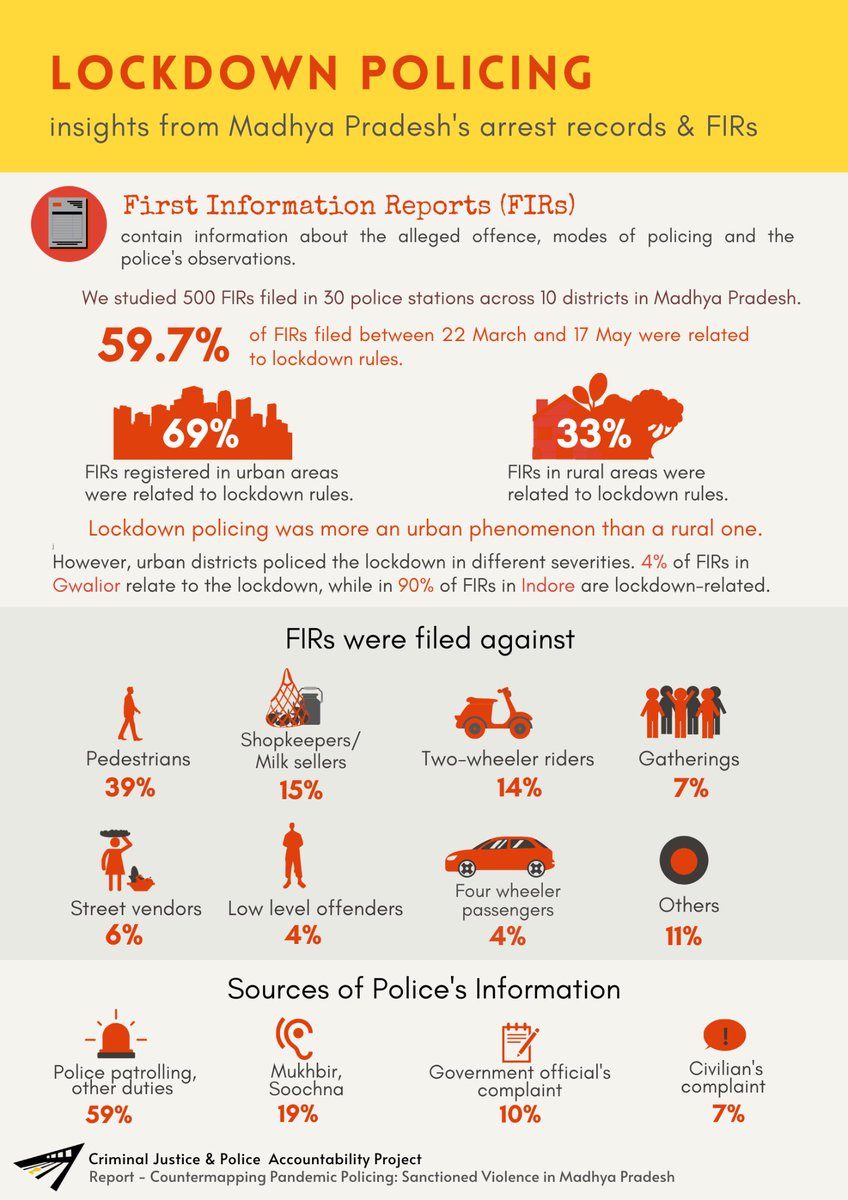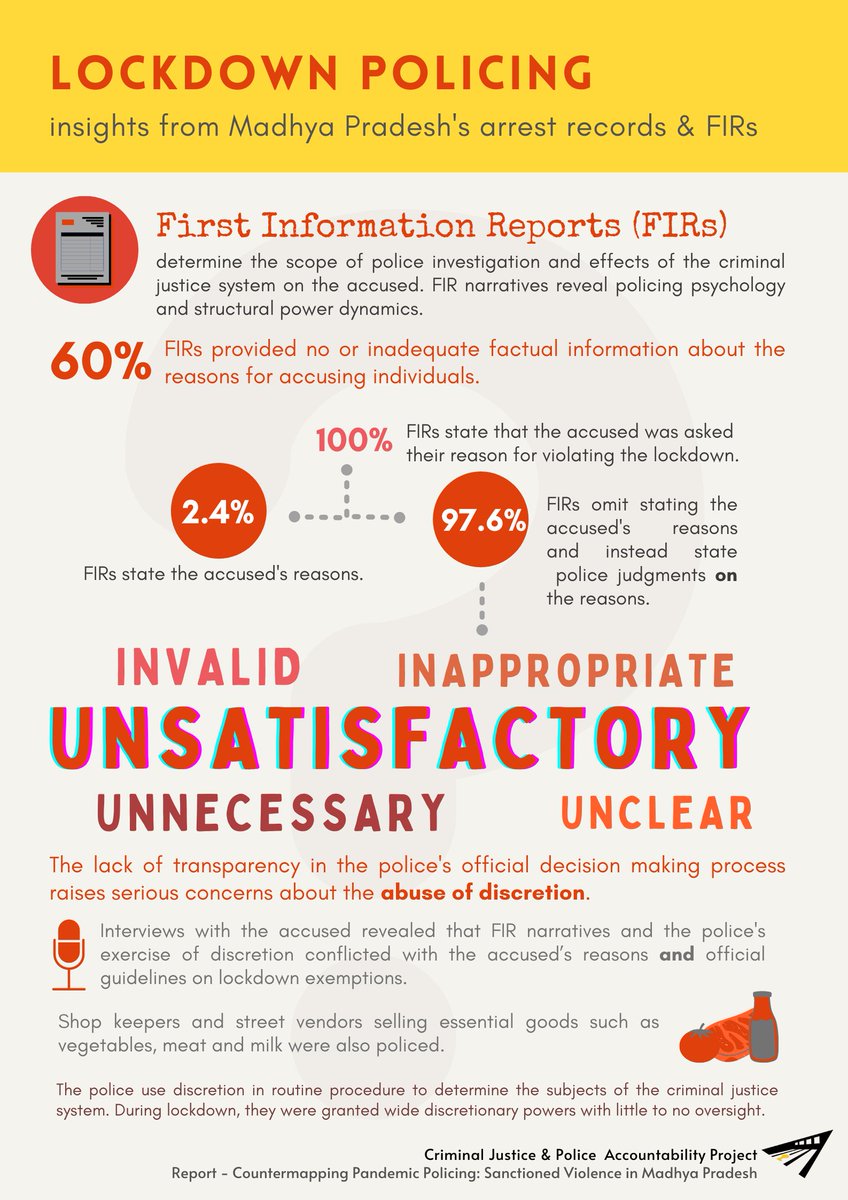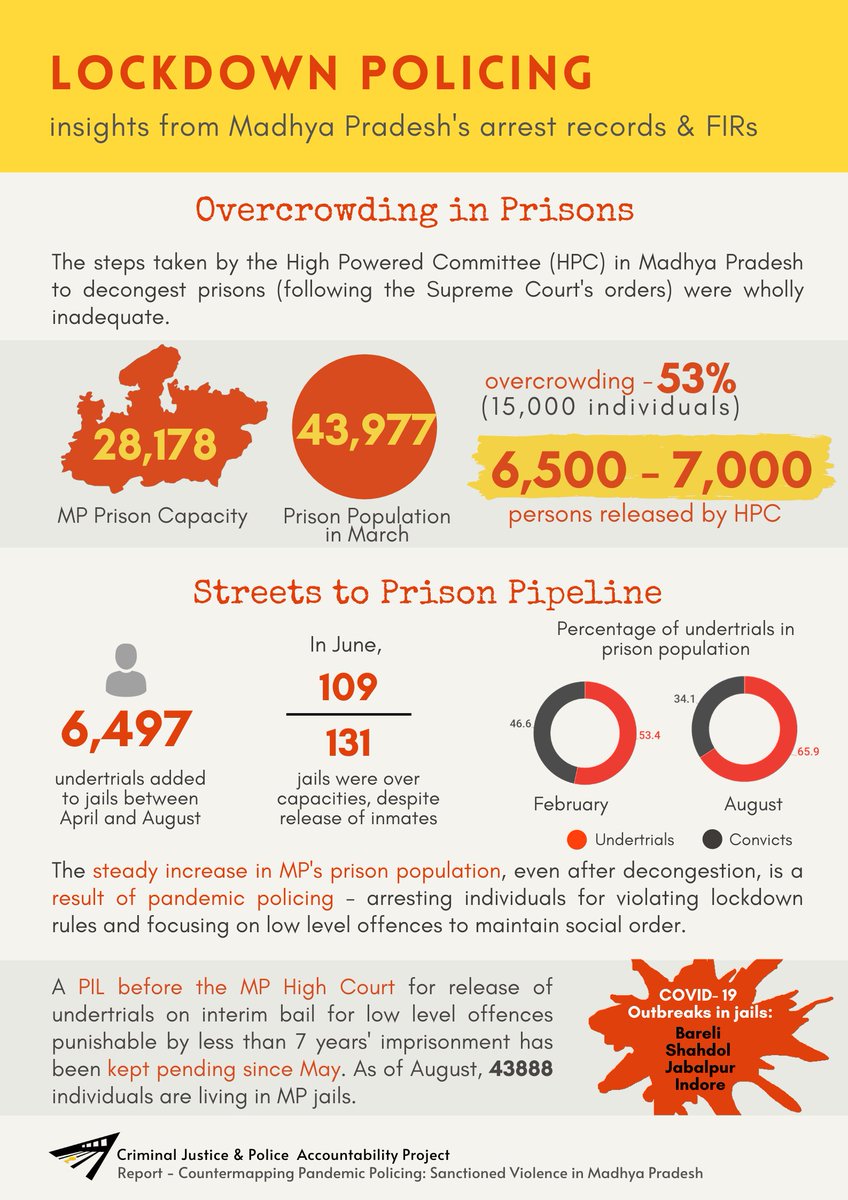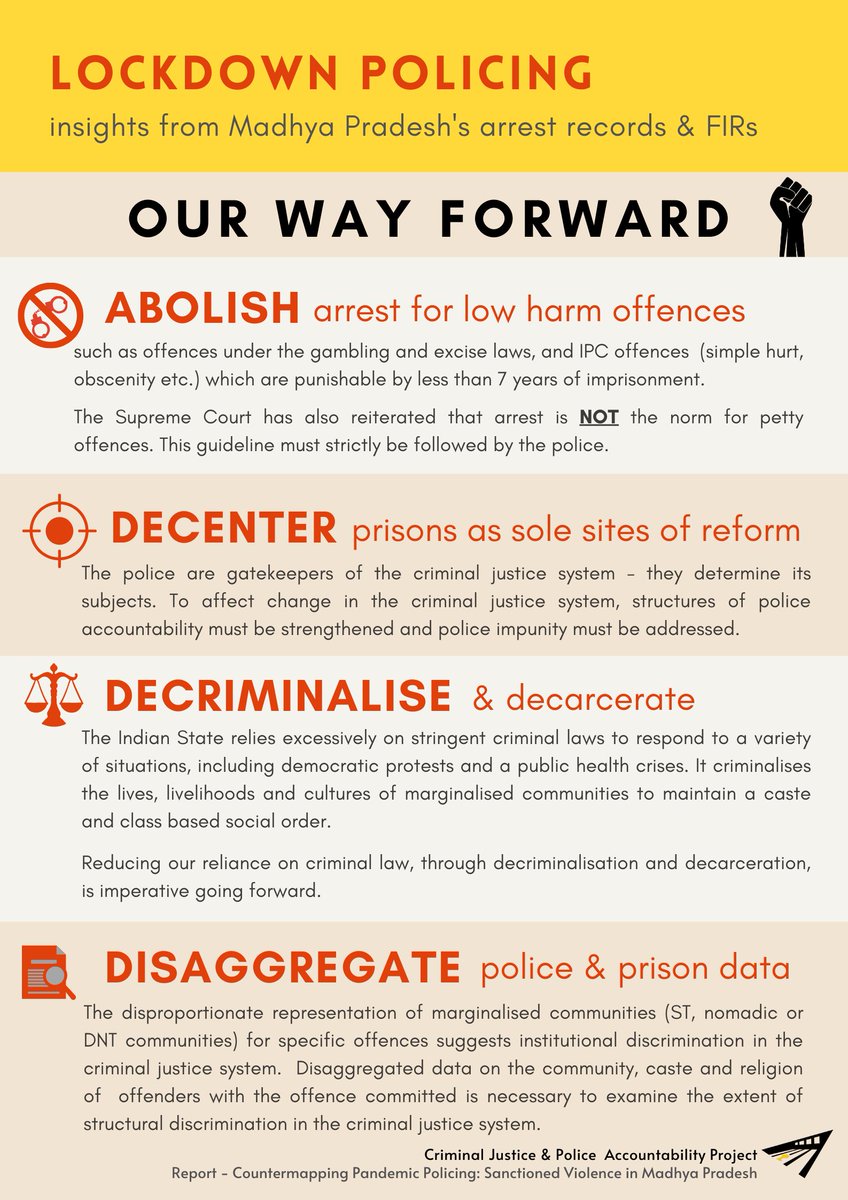In September 2020 we published our report "Countermapping Pandemic Policing: A Study of Sanctioned Violence in MP". Every weekend, we will be putting out infographics simplifying our findings.
Graphic 1 outlines the nature of pandemic policing with a focus on arrests. (1/7)
Graphic 1 outlines the nature of pandemic policing with a focus on arrests. (1/7)
Graphic 2 answers the question who was being policed. The numbers are disproportionately made up of people from marginalised communities. Different groups are targeted under different laws for instance Dalits and Adivasis under excise laws, Muslims for lockdown violation. (2/7)
Graphic 3 elaborates on the net of criminal laws and powers used to enforce the lockdown, these were often overbroad and disproportionate.b(3/7)
Graphic 4 will tell you how in this period, much of the police force was involved in lockdown enforcement across the state but disproportionately in urban centres. Pedestrians and shopkeepers face the brunt of this and policing mainly relied on patrolling and checkpoints. (4/7)
Notably, as graphic 5 will tell you, there was significant discretion that the police exercised,often relying on vague and subjective language. The discretion without transparency led to widespread arbitrariness. (5/7)
Graphic 6 tells us that the police's actions had serious consequences. While the state government was releasing prison inmates to decongest prison from their overcrowded state, on the other hand arbitrary policing ensured that those effort came to naught. (6/7)
The final graphic of this series points out some immediate steps for which which we musts
start making efforts. This goes beyond the rhetoric of "reforms" in the sense it is understood. These are just the first steps and we admit true liberation goes far beyond even these (7/7)
start making efforts. This goes beyond the rhetoric of "reforms" in the sense it is understood. These are just the first steps and we admit true liberation goes far beyond even these (7/7)
@detsolnet @justice_alt @sukanyashantha @WadekarDisha @rajabugs @neet_tweeting @d_s_thakur @pkotiswaran @saumyadadoo @knowleena @bludeehmary @gautambhatia88 @gggodhwani @digitaldutta @Saumya_282 @itida_p @magicanarchist @jlokhande007 @arjunkapoor @arjunsheoran
@h_tejas @monteskw @MonkeyBhaat @MisraMaitreyi @beaucephalis @caselchris1 @CHRI_INT @project_polis @suchitrav @Suchitrawrites @DamniKain @gaachburi @jeevika_shiv @jeegujja @so_radhikal @COVIDStateWatch @watchthestate @Police_Acc_Proj @AbolitionistLC

 Read on Twitter
Read on Twitter